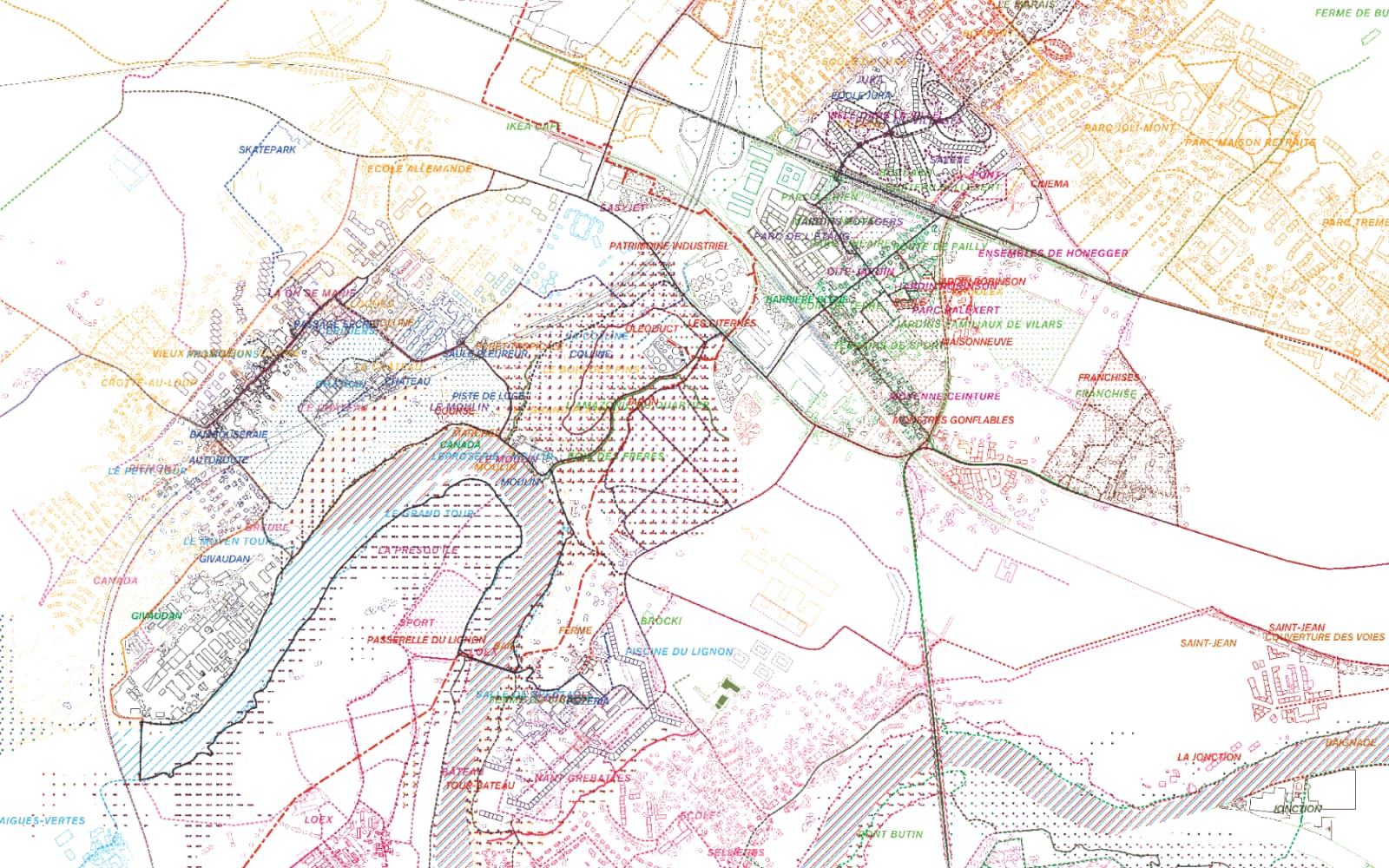A common ground for adaptive contributive design
Downloads
DOI:
https://doi.org/10.47982/spool.2023.1.06Keywords:
ALICE, urban design, data-based drawing, affective cartography, ecological transitionAbstract
The laboratory ALICE (Atelier de la Conception de l’Espace) at the École Polytechnique Fédérale de Lausanne (EPFL) advances a comprehensive approach to data-based drawing oriented towards architectural and urban co-design processes. This drawing methodology has been key in the contributive design process they have applied over the last seven years, covering a range of scales and contexts, both within the public and private spheres.
Contribution has become a relational strategy that unites a diverse range of participants, each hailing from various backgrounds and carrying unique needs, which come together around the drawing. For this reason, the cultivation of a robust drawing culture, from their teaching to their research and design activities, has become a cornerstone of ALICE’s philosophy, where drawing is embraced not merely as a representational tool but as a constructive means for design work. Their methodology has now evolved to include data-based drawing techniques, skillfully merging precise surveying with qualitative data analysis, thereby bridging the gap between quantitative and qualitative facets of design.
This article explains this data-based approach to drawing through a series of projects developed in the Greater Geneva region. Throughout them, they explain how ALICE’s situated data-based drawings facilitate intricate coordination among students, leading to real-scale interventions; explore the potential of transforming main roads into landscape infrastructures that promote sustainable mobility and urban development; or offer an innovative lens to comprehend the affective connections between citizens and their urban surroundings, transcending traditional cartographic representations. Finally, these efforts are summarised through the analysis of a single drawing showcased at the 2021 Venice Biennale, illustrating the potential of this methodology to harmonize the collective efforts of various stakeholders.
How to Cite
Published
License
Copyright (c) 2023 Ruben Valdez, Lucia Jalon Oyarzun, Dieter Dietz, Malcolm Onifade, Aurele Pulfer

This work is licensed under a Creative Commons Attribution 4.0 International License.

References
ALICE. (2022). Contributive Workshops. In STOA 5. University of Naples Federico II - DIARC.
Dietz, D., Negueruela del Castillo, D., Mignon, A., & Lafontaine Carboni, J. (Year). HOUSE 1 Protostructure: Enhancement of Spatial Imagination and Craftsmanship Between the Digital and the Analogical. In Digital Wood Design. Innovative Techniques of Representation in Architectural Design, Lecture Notes in Civil Engineering, Volume 24, pp. 1229-1252. Link
ENAC. (n.d.). PLHEBICITE (Planning for healthier and biodiverse cities). Link
Fondation Braillard. https://doi.org/10.1007/978-3-030-03676-8_50 DOI: https://doi.org/10.1007/978-3-030-03676-8_50
Genève. (2023). Onex Micro-Territoires : expérimentons l’espace urbain ! ge.ch. https://www.ge.ch/dossier/concertation/demarches-terminees/onex-micro-territoires-experimentons-espace-urbain
Guattari, F. (2000). The Three Ecologies. The Athlone Press.
Mignon, A. (2019). Protostructure, archéologie et hypothèse d’une architecture-support. EPFL. https://doi.org/10.5075/epfl-thesis-9460
SITG. (n.d.). SITG | Le territoire genevois à la carte. https://ge.ch/sitg
Stiegler, B. (2020). L’archipel des Vivants. Des territoires laboratoires en archipel pour une politique et une économie des formes de vie. Etica & Politica/Ethics & Politics, XXII(2), 157-170.
Table Ronde Laboratoire ALICE EPFL. (n.d.). https://www.ma-ge.ch/evenement/table-ronde-laboratoire-alice-epfl/



